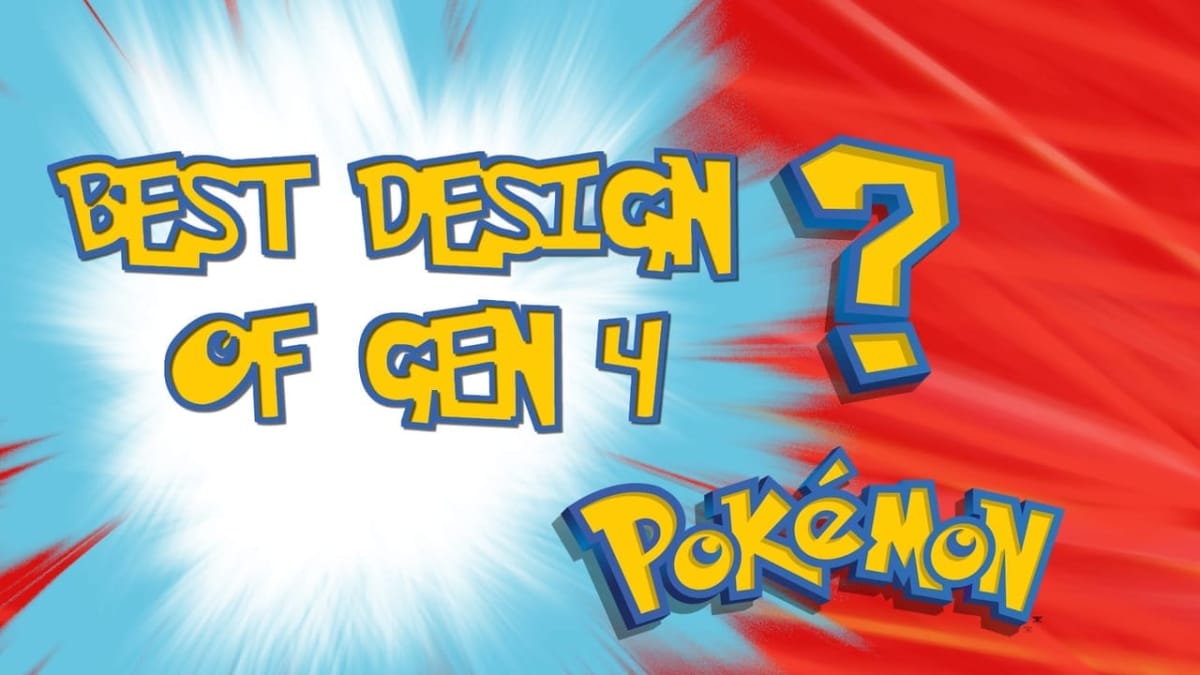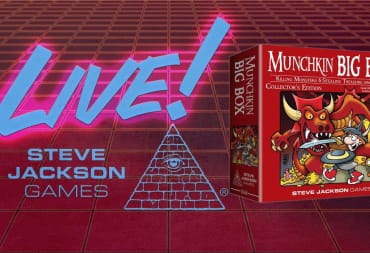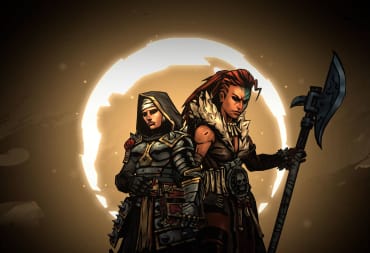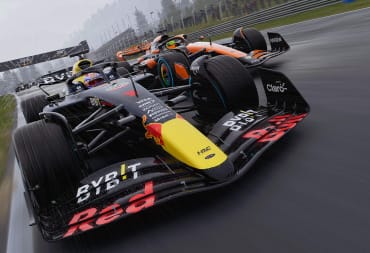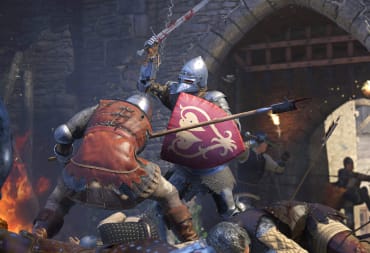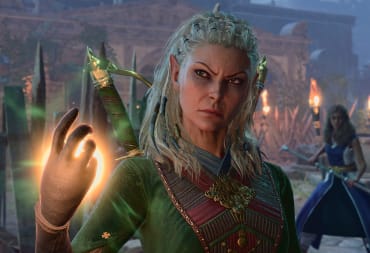Generation 4, to me, is the worst Generation out of the entire Pokemon franchise. It is probably sacrilegious to say that, namely because the 4th Gen games are well liked by the Pokemon community because of the fine-tuning it did for the competitive scene. Make no mistake, I agree with that assessment too; the physical/special split between moves and the edition of multiple power moves pretty much cemented Gen 4 as the competitive players dream.
This article is one in a series we’re calling the Year of Pokemon, which celebrates the beloved pocket monsters and their many games.
Everything else, not so much. The Sinnoh region was boring and over-reliant on the now retired HM mechanic, and the mainline story did nothing new or interesting, to the point of being only good with the games stand-alone sequel, Pokémon Platinum. Worst of all, it had one of the worst mixes of Pokemon found during the main game, with a quarter of the Pokedex being unavailable until post-game.
Adding to that is, for my money, the weakest roster of new Pokémon designs. Part of the reason is the over-reliance on new evolutions for old designs; 29 out of 107 Pokémon, roughly 27% of the entire Pokedex, contains pre- and new evolutions. Not to mention a ton of filler designs, plus 14 legendaries, adding further padding to the game.
Still, some of the designs stand out as the best in the series, so let us highlight the top six best Pokemon designs from Generation 4.
As always, a few guidelines before we begin. First, no legendary Pokemon will be on this list. Second, only one Pokemon per evolutionary line will be showcased. Finally, the list will combine design aesthetics, competitive viability and overall impact as part of the criteria of their design.
Drapion 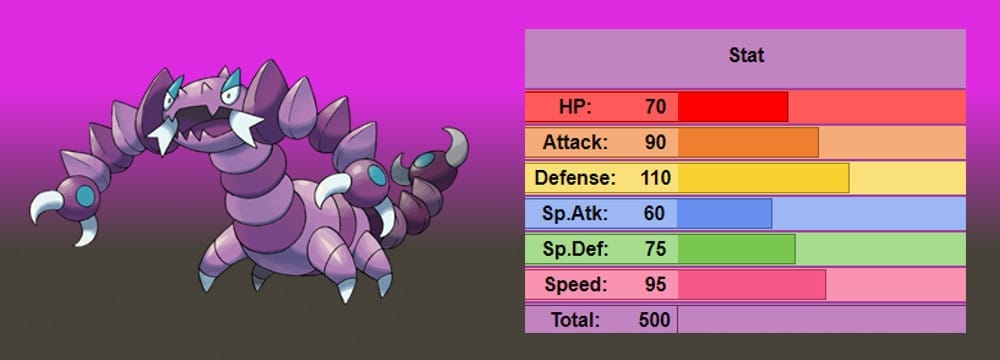
Drapion is an acquired taste compared to what else is on this list, but it was always a standout design to me due to several key factors. The dual Poison/Dark type was one part of its charm, but its menacing features always gave it a sinister edge that oozed “deadly” whenever you saw it in battle. The big reference point is, of course, being a scorpion, one of the coolest looking real-life arachnids in the world.
Drapion is not technically based on a scorpion, however. Its elongated body and large mandibles also resemble a scorpion-like arachnid known as the whip scorpion or vinegaroon, a sub-species known as Thelyphonida. Drapion’s finishing touches, such as the white fangs or pointed blue accents on its eyes, give it aggressive characteristics, and were an overall good edition by its designer, Kenkichi Toyama.
As a battler, Drapion is a jack-of-all-trades Pokémon. A defensive powerhouse with only a singular ground weakness and 110 defense, it is often used as a bulky sweeper due to its high 90 base attack and access to great coverage moves such as Knock Off, Poison Jab, Aqua Tail, Earthquake, and Ice Fang. Drapion can also be used to lay down toxic spikes, taunt users into attacking it, or even make use of its Sniper ability, which grants 3x critical hit damage when hitting an opponent. While a massive presence in the games, Drapion is an aggressive and deadly opponent on the competitive scene that can cause a ton of damage to those not prepared for it.
Electivire 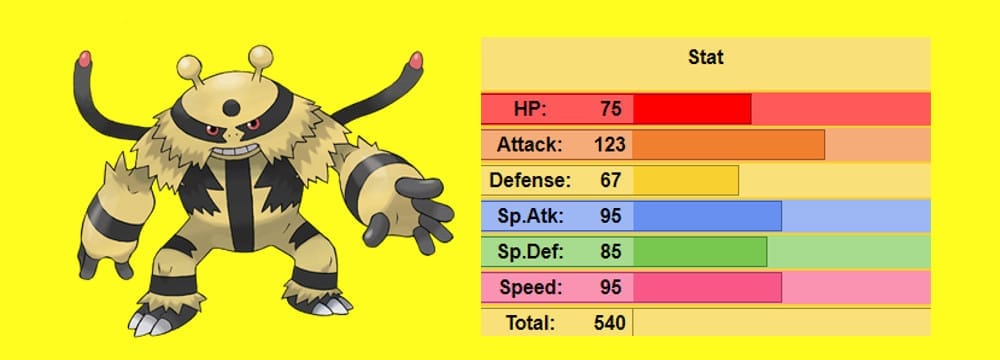
Electabuzz was always a goofy-looking Pokémon, but it was one of the few viable Electric-types found in Generation 1 that was a non-legendary. Generation 4 gifted Pokemon with Electrivire, one of the 29 additions to previously made Pokémon, and it turned it into a beast. We have now this thick, muscular monster offset with its trademark woolly pelt of yellow and black fur, fully accented by its two “livewire” tail cords on its back. Electrivire looks like a sasquatch combined with a battery and is equally dangerous in the right hands.
While Electabuzz has a cool but somewhat silly design, Electivire exudes confidence and presence when you first look at it. It does better than its counterpart Magmortar, who still retains some of the more exaggerated aesthetics of another odd duck in Magmar. Electivire just radiates charisma through its base design; it looks like a monster fit for Pokémon, and it doesn’t disappoint.
Its fighting prowess is also nothing to sneeze at. Despite mediocre bulk, the base 123 attack and 95 special attack stats, offset with a base 95 speed and a wide movepool, make it a potent mixed attacker threat to many team combinations. Electivire’s biggest strength is unpredictability, often using a combination of physical and special moves to maximize coverage and attacking options, such as Ice Punch, Signal Beam, Stomping Tantrum, and Thunderbolt. Defensive moves like Magnet Rise and Electric Terrain also add new strategies to the mix, while its Motor Drive ability neutralizes Electric-types while giving Electrivire a speed boost. All in all, a powerful-looking Pokémon with powerful attacking stats to back it up.
Lucario 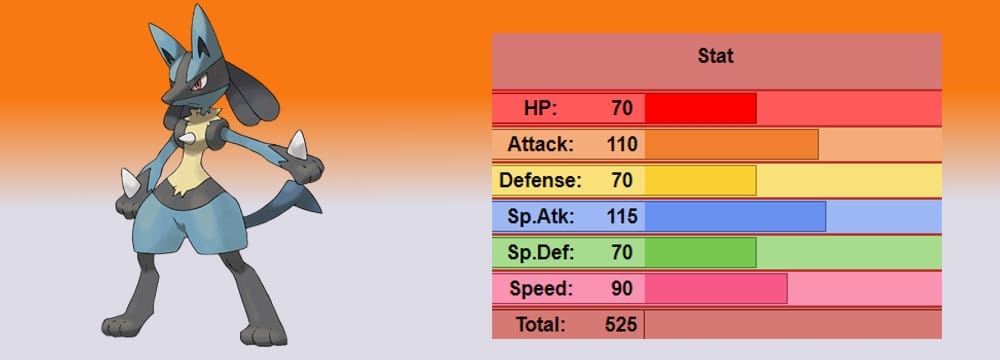
The poster-boy of Generation 4, Lucario is the perfect representation of the transition of Pokémon designs. There are many fans who criticized Game Freak of running out of ideas for designs. Another charge against the newer games is often the claim that too many Pokémon resemble competitor Digimon in terms of aesthetics. (More on that in another article…) Lucario is kind of a fit in both categories, yet has become a successful and popular mascot for the franchise—perhaps top 5 most recognizable in the series.
Part of it is the anthropomorphized look, but that is nothing new in Pokémon. Part of it also stems from the Lucario movie, which is often cited as one of the better anime movies in the twenty-plus year run of the franchise. The combination of Jackal and Egyptian Boxer also fits with its Fighting/Steel typing. It’s color scheme and overall design also contribute to its overall coolness factor.
What always fascinated me about Lucario is how easily it could have fit in a franchise like Digimon, yet here it is, one of those perfect-storm designs that just fires on all cylinders for fans. Even for me, as someone who does find Lucario to be a tad overrated as a competitive Pokémon, must admit that in the end, it is a near perfect design. Of course, that overrated status is mostly out of its standard role as a fast sweeper. Lucario’s base attack and special attack are both exceptional, and a base 90 speed again adds it to the list of potentially fast sweepers.
Today its mega-evolution, capping off at a whopping 145 attack and 140 special attack with 112 speed, totally outclass Lucario proper. Part of the problem there is its role does not change as a mixed attacker, and due to its fairly average defenses, it was always relegated to a Choice Scarf sweeper role. The mega-evolution simply has more versatility and potential than Lucario. Still, don’t let that discourage you from using it competitively, as Lucario has a large enough movepool to pack a few surprises against an opponent, despite the primary strategy of using it not changing much in a decade.
Mamoswine 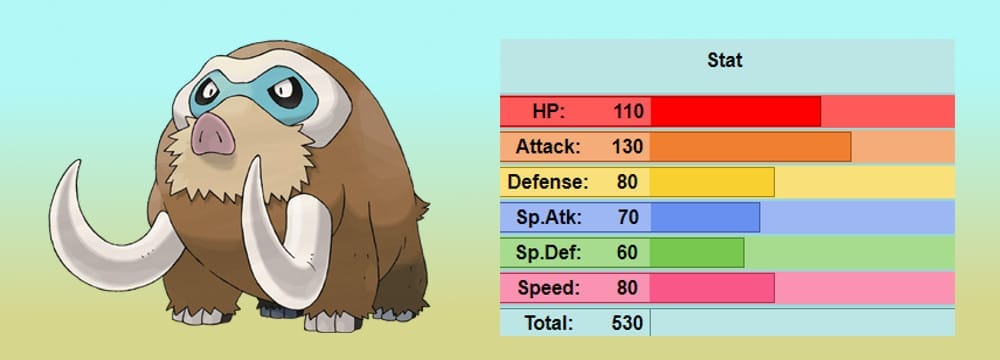
Another one of the new evolutions for an old Pokémon, Mamoswine is what I always hoped would come to the game, an Ice-type based on a Mammoth. Past the wish-fulfillment, Mamoswine has a lot going for it that makes it a strong Pokémon design. It is a good example of simplicity being effective as well; its portly body is juxtaposed by large, white tusks made of pure ice in the game lore, along with a white and blue “ski mask” motif across its eyes. There is just enough aesthetics to keep it from being over-designed. It even retains some of its pig-like traits as well, giving it the appearance of a large boar crossed between a Mammoth—a very striking combination.
Mamoswine is also the perfect example of how the physical/special split in Generation 4 added much needed diversity in competitive strategy. The split in question, for those who don’t know, refers to Pokémon moves being in one of three categories. Physical moves are moves that make physical contact with the opponent, such as a punch or stomp. Special moves now generally make indirect contact, such as Thunderbolt or Ice Beam, while the third category, status moves, do no damage but cause different effects to occur. The reason this is significant is prior to Generation 4, physical and special moves were based off type, not the move itself. So, for Mamoswine, Ice-type moves would rely on its special attack as they were special-type moves, while Ground-type moves would rely on it’s physical attack.
The split would do wonders for old and new Pokémon, and Mamoswine is no exception. Like most Pokemon from Generation 4, Mamoswine is a physical powerhouse with a 130 base attack and a beefy 110 base HP. The addition of physical Ice-type moves, such as Icicle Crash, Avalanche, and Ice Shard, finally give it the base power that Piloswine always lacked. While it lacks good coverage, its Ground/Ice typing is an offensive powerhouse, often relegating it to a Wallbreaker Pokémon in both competitive and casual formats as it can neutrally cover most of the types in the game.
Piplup 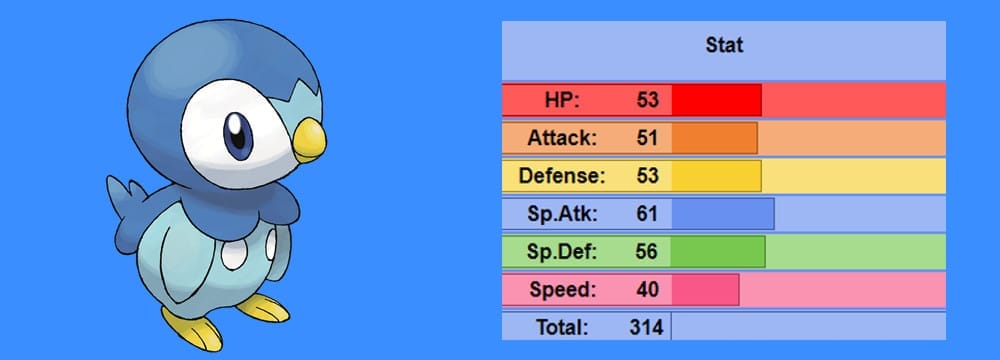
Piplup was easily the cutest starter out of the 4th Gen trio, and of the three perhaps the most memorable. This is thanks to the Diamond and Pearl Anime, where Piplup had a starring role alongside Pikachu for most of the series. Owned by his female companion Dawn, Piplup’s exaggerated expressions and fierce competitive personality made it a strong foil for the rest of Dawn’s Pokémon team, making it one of the most enduring Pokémon from the anime to this day.
In-game, Piplup's design is always eye-catching in a subtler way. Designed by former Game Freak artist Yusuke Ohmura, Piplup’s contrasting blue color scheme is more appealing than the standard orange/flaming tail combo of Chimchar or the bland design of Turtwig. Its minor features, such as the crown motif above its beak or the accenting white spots across its face and body, are nice touches that highlight the blue and cyan color scheme. Its round face is also appealing, giving the impression of a curious monster that would be endearing toward the player.
In terms of competitive use, Piplup has carved a niche in the realm of little cup thanks to status moves like Defog and Stealth Rock. While it is a predictable Pokémon in this format, Piplup’s even stats, save for its 40 base speed and 61 base special attack, give it sustainability and some power against opponents as it sets up on them. In effect, it is a mini version of a “bulky water” type against another unevolved Pokémon.
Weavile 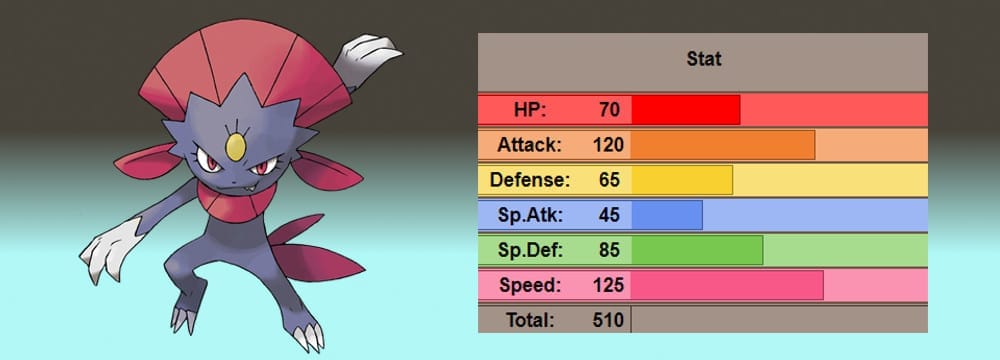
Sneasel was always a cool design; sleek, deadly and simple in its purpose, it was a standout design in Generation 2 that, if Weavile didn’t exist, would have made my list of the best designs of Gen 2.
Thankfully, Weavile does exist, so the Sneasel line can have its moment in the sun. Weavile is just perfect as an “evil” archetype. Its smug, wry smile across its grey-furred body says all you need to know about its personality, while its hooked claws and slender body said all you needed about its fighting ability.
Weavile is based on a combination of several sources. While most certainly a weasel, it is also believed to be based on the Yokai Kamaitachi, a weasel demon with sickle-like claws that often cut and scratched unfortunate victims caught in its windy storms. Often, the stories were about storms from cold regions, another connection based on Weaviles typing. Another motif comes from its pink head crown, which is possibly based on ancient Egyptian headdresses. Generation 4 dipped heavily into Egyptian-style motifs for several Pokémon designs and backstory, so it wouldn’t be surprising if Weavile was a part of that as well.
As a competitive Pokémon, Weavile is often used as a revenge killer, picking off weaker opponents thanks to its 125 base speed and 125 base attack. Generation 4 saw a decisive shift towards physical attacks over special attacks, and Weavile was on the cutting edge of that, graced with Dark/Ice STAB coverage and access to priority and power moves. The physical/special split made physical attackers more valuable, but often at the cost of diverse movesets, a primary weakness of Weavile's as it is ultimately very predictable like many revenge killers and frail, physical sweepers. Still, it was a deadly opponent to those unprepared, and to this day is a massive threat in both single and double matchups.
And there you have it. I may not like many of the designs in Gen 4, but the cream of the crop was easy to pick out. Unfortunately, the potential Pokémon for the worst designs of this Generation is big, with a lot of filler designs, over-designed monsters, and just poor battlers to choose from.
Which six will be on that list? Find out next time when we cover the worst designs of Generation 4. Be sure to check out that article when it comes, as well as all of our coverage of the The Year of Pokémon here.
Do you agree with our choices here? Let us know in the comments below.
Have a tip, or want to point out something we missed? Leave a Comment or e-mail us at tips@techraptor.net
